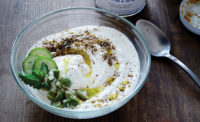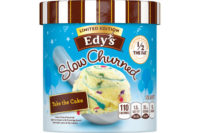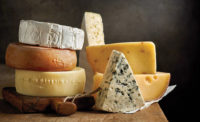Specialty and artisan cheeses are in this year. Cheesemakers are putting their efforts into developing all-natural and low-fat varieties. And processors are planning a wide variety of capital investments, including form-fill-sealers, cutting equipment, vats and tanks.
Those are some of the results from the latest Dairy Foods survey of cheese processors. Last autumn, the Market Research Division of BNP Media (parent company of Dairy Foods) surveyed subscribers to the magazine and newsletter who process cheese. The purpose was to better understand cheese-producing companies in terms of sales, production, packaging and new products.
Among those surveyed, Cheddar is the most commonly produced cheese (51% of all responding companies). Of those producing Cheddar, one in four said it is their No. 1 best-selling cheese. The retail market accounts for 47% of all cheese sales, respondents said. The foodservice/institutional market accounts for 22%, commercial for 19%, export for 8% and “other” for 5%.
Six out of 10 companies are developing new, all-natural cheeses; only 3% replied they are developing no new cheese products. While an overwhelming majority report specialty cheeses will be “in style” this year, 40% reported that bold flavors and string cheeses will be “out of style.”
Cheesemakers are turning to the herb garden for inspiration. They say new flavors for 2013 include herbs such as basil, chives and oregano. Cheese blends are the second-most planned flavor for this year.
Of those surveyed, the median gross annual sales for 2011 were $3 million (mean was $115.6 million). The median number of employees was 110 (469 mean). Fully 85% of those replying performed the function of research and development/product development; corporate management and administration; plant operations/production; or quality assurance/quality control. More than half the survey respondents said they are fully involved in product development or the production process. The mean industry experience is 16 years.
Geographic breakdown of survey respondents is Midwest (29%), West (11%), Northeast (9%), South (8%) and outside of the United States (42%).



















